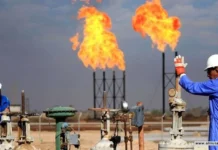Oil prices rose slightly in early Asian trade on Tuesday, but gains remained limited as lingering concerns over oversupply and sluggish demand continued to weigh on sentiment.
Brent crude futures gained 17 cents, or 0.27%, to $63.69 a barrel at 0455 GMT, while U.S. West Texas Intermediate (WTI) rose 18 cents, or 0.3%, to $59.78.
Global crude prices have now fallen for three straight months, pressured by rising production from both OPEC+ members and non-OPEC producers.
According to Haitong Securities, oil momentum shifted slightly at the end of October after U.S. and U.K. sanctions on major Russian oil companies softened the market’s earlier bearish tone. The OPEC+ decision to pause output hikes in Q1 2026 also helped curb fears of a growing glut.
Still, demand worries persist. J.P. Morgan said in a client note that global oil demand has risen only 850,000 barrels per day (bpd) so far this year — below its earlier forecast of 900,000 bpd. The bank cited “weak travel activity and lower container shipments” as indicators of muted consumption in the U.S.
Data from the U.S. Energy Information Administration (EIA) added further pressure, showing U.S. crude inventories rose by 5.2 million barrels last week — far above analyst expectations for a smaller 603,000-barrel increase.
Capital Economics forecast continued downward pressure on oil prices, projecting Brent at $60 per barrel by end-2025 and $50 by end-2026, citing persistent oversupply and weak demand growth.
Adding to the bearish tone, Saudi Arabia — the world’s top crude exporter — cut its December prices for Asian buyers, signaling its intent to stay competitive amid ample market supply and rising OPEC+ output.





